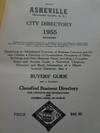
I. Sleidani De quatuor summis imperiis libri tres; Postrema editione hac accurate recogniti.
by SLEIDANUS,I
- Used
- Hardcover
- Condition
- See description
- Seller
-
AMSTERDAM, Netherlands
Payment Methods Accepted
About This Item
Reviews
(Log in or Create an Account first!)
Details
- Bookseller
- Antiquariaat Fragmenta Selecta
(NL)
- Bookseller's Inventory #
- 120029
- Title
- I. Sleidani De quatuor summis imperiis libri tres; Postrema editione hac accurate recogniti.
- Author
- SLEIDANUS,I
- Book Condition
- Used
- Binding
- Hardcover
- Keywords
- (Oude Druk) (Rare Books) Antike Babylon Babylonia Kirchengeschichte Persia Persien alte Geschichte ancient history church history
- Bookseller catalogs
- Old and Rare books;
Terms of Sale
Antiquariaat Fragmenta Selecta
Books may be returned for any reason within 14 days of receipt. The book price will be refunded, if the book is returned in the same condition as sent, and packed, shipped and insured as received. A full refund including shipping costs will follow only if an item arrives misdescribed or damaged. Shipping estimates are based on books weighing 4.4 LB or 2 KG. If your book order is heavy or oversized, we will email you to let you know that extra shipping is required. All books are in good antiquarian condition, unless otherwise described. Items offered are subject to prior sale.
About the Seller
Antiquariaat Fragmenta Selecta
About Antiquariaat Fragmenta Selecta
Glossary
Some terminology that may be used in this description includes:
- Raised Band(s)
- Raised bands refer to the ridges that protrude slightly from the spine on leather bound books. The bands are created in the...
- Vellum
- Vellum is a sheet of specialty prepared skin of lamb, calf, or goat kid used for binding a book or for printing and writing. ...
- Foxed
- Foxing is the age related browning, or brown-yellowish spots, that can occur to book paper over time. When this aging process...
- Verso
- The page bound on the left side of a book, opposite to the recto page.
- 12mo
- A duodecimo is a book approximately 7 by 4.5 inches in size, or similar in size to a contemporary mass market paperback. Also...




